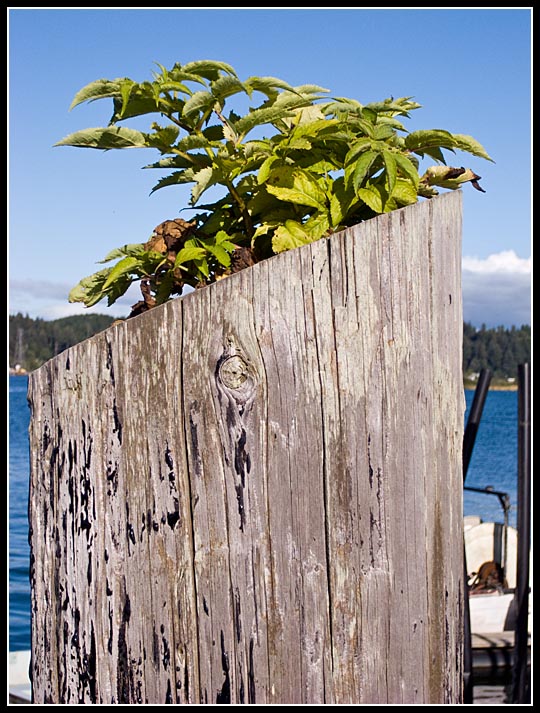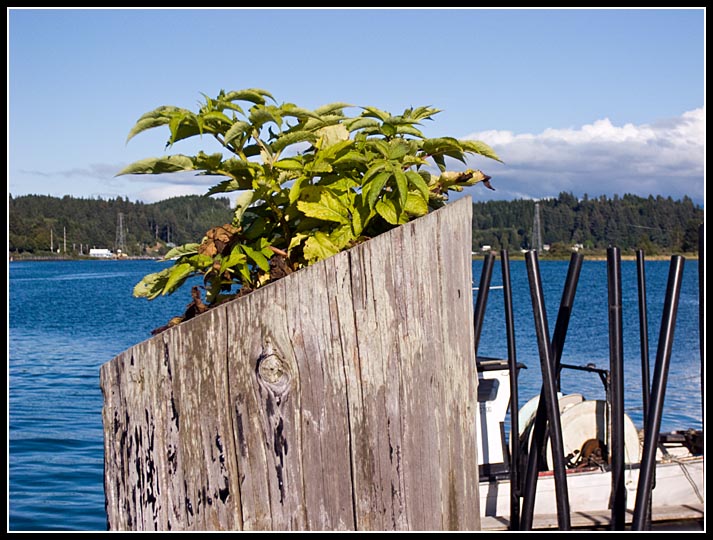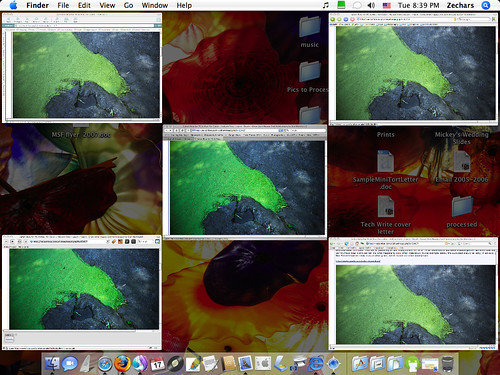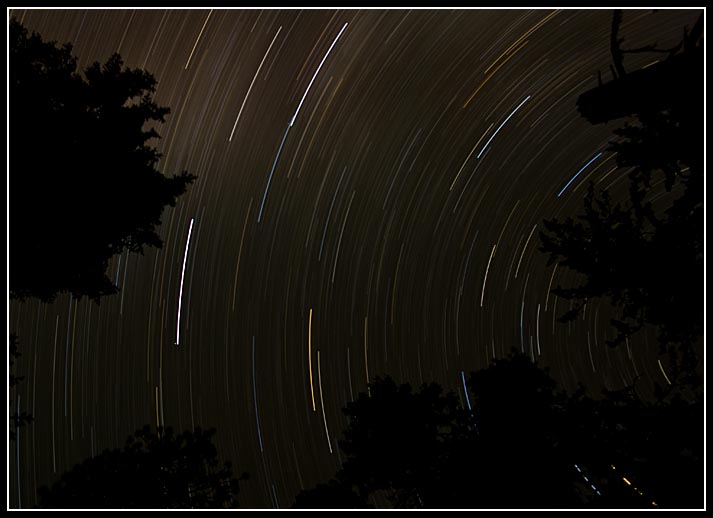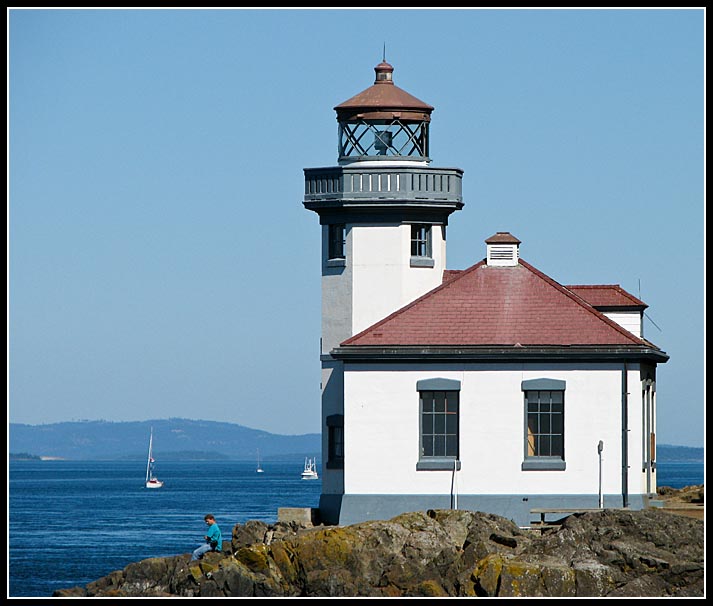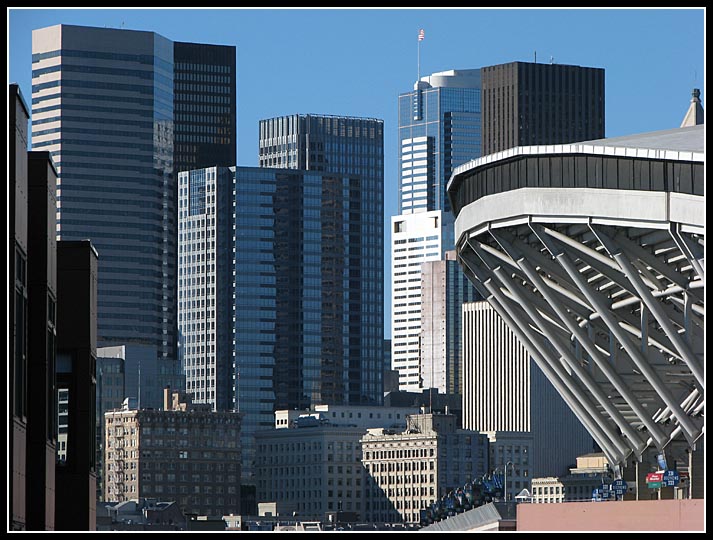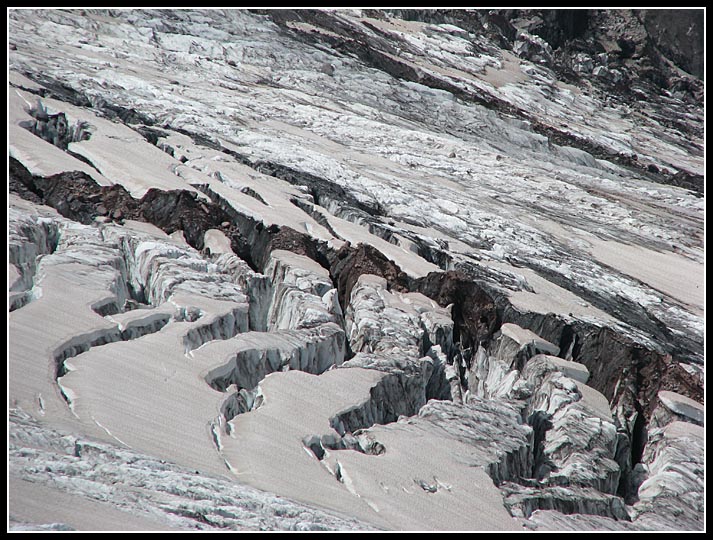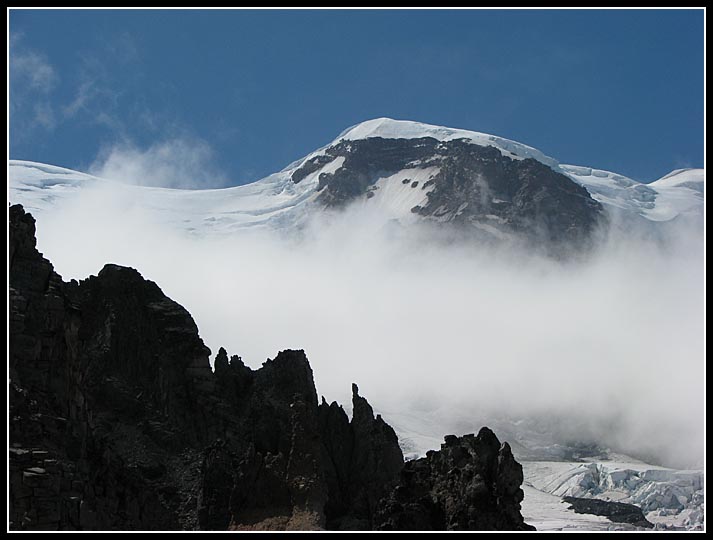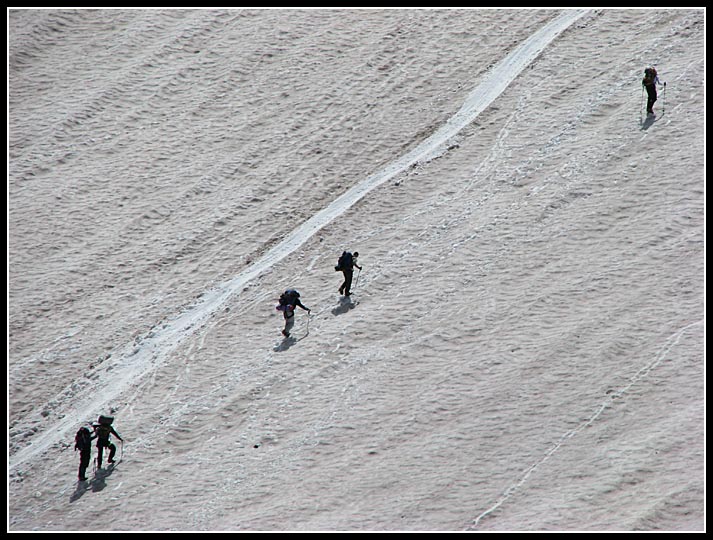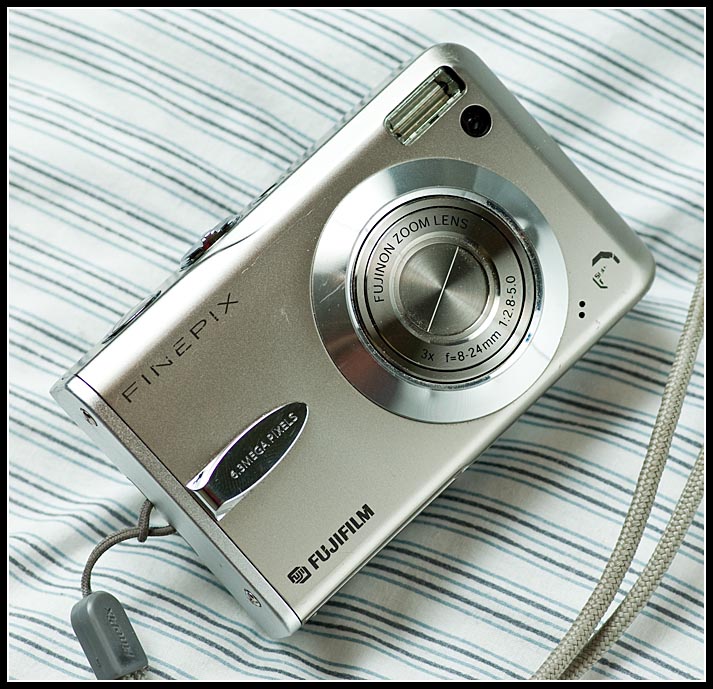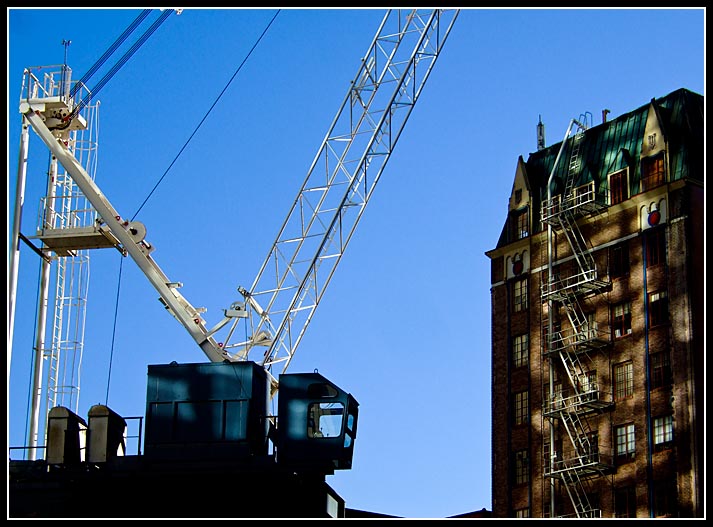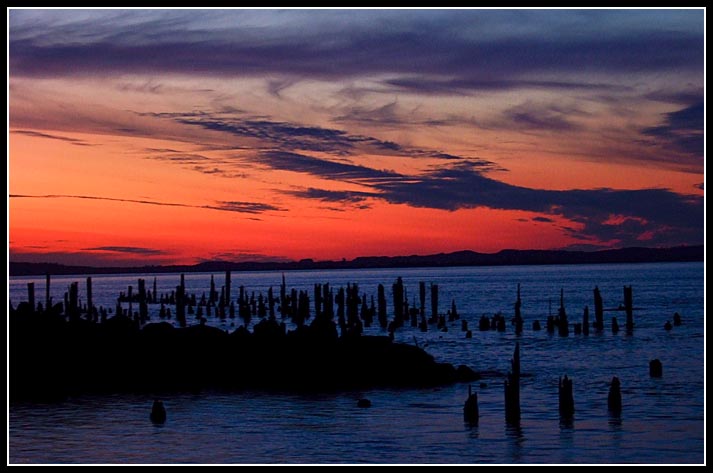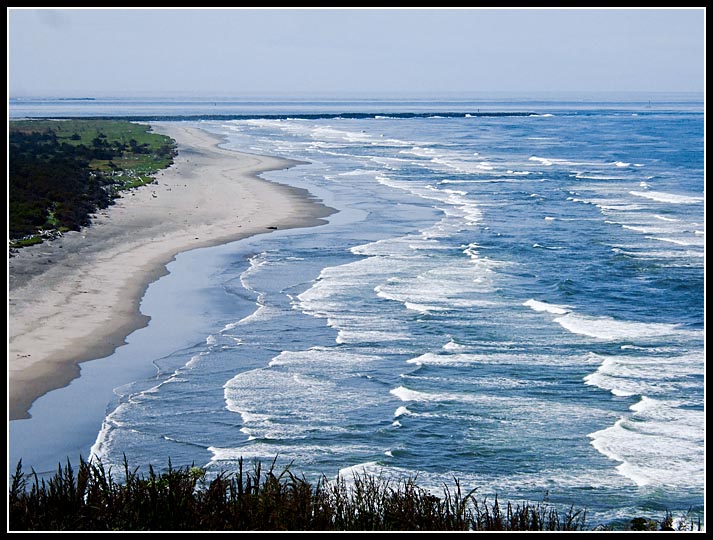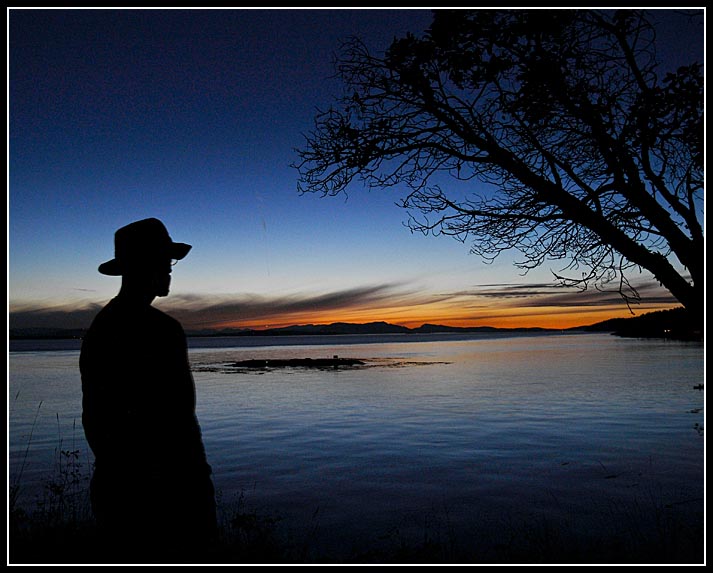
So I said that I'd bought two new cameras to replace my Fuji F30 and to act as a DSLR stand-in when I wasn't able or didn't want to carry the weight and bulk of my DSLR system. A pre-requisite for both cameras was that they must have a hot shoe so I could do wireless flash work with them. The Canon S5 IS took care of the long end of things and gave me a flip out screen which I really wanted, but that left the wide end lacking. When it comes to P&S cameras it's hard to find something with a wide angle lens, most start at a 35mm equivalent (which isn't wide enough for me) with a few starting at 28mm. Finding one with a wide angle lens
and a hot shoe is darn near impossible!

When I heard about the Ricoh GX100 I was very intrigued. It has a zoom lens starting at a 24mm equivalent (same as my wide angle DSLR lens), a hot shoe, and it's supposed to be designed to be used as a photographers camera. Basically that meant the layout looked to be well thought out with the most important controls directly (or almost directly) accessed instead of being buried in menus. It was also able to capture RAW images in addition to JPG and that was enough for me to give it a serious look.
Unfortunately this is a hard camera to get ahold of. There are only a few vendors offering it for sale in the US which makes it impossible to actually look at in person before buying it. I had to make my decision by listening to the experiences of other users and reading some so-so on-line reviews. In the end I decided it was the camera I needed, gulped real hard, and ordered it from Adorama. Their is also a clip on EVF (Electronic View Finder) available for an extra $100 but I decided to pass on it for now.

As with the Canon S5 IS I wasn't expecting miracles from the camera. I realized that it wouldn't be anywhere near the level of image quality that a DSLR offered and it wouldn't be nearly effective at high ISO's in comparison to my old F30. I was hoping the image stabilization would make up for that though by letting me shoot at lower ISO's in lower light. But I was willing to give that stuff up for a 24mm equivalent lens in a pocketable camera that had a hot shoe and could do RAW capture.

When the camera arrived I immediately fell in love with the layout, handling, and feel of the camera. I was a long time film hold out and did my share of rangefinder shooting; it felt a lot like holding my old Olympus XA when I picked up the camera. A nice, compact, hefty package with well laid out controls. The size of the camera is a little larger and heavier then your typical P&S but it still fits in a pocket and has a very nice feel.
Just in front of the shutter release under you index finger is a rotary control wheel to control lens aperture. I LOVE control wheels, they're so much better then little rocker switches!
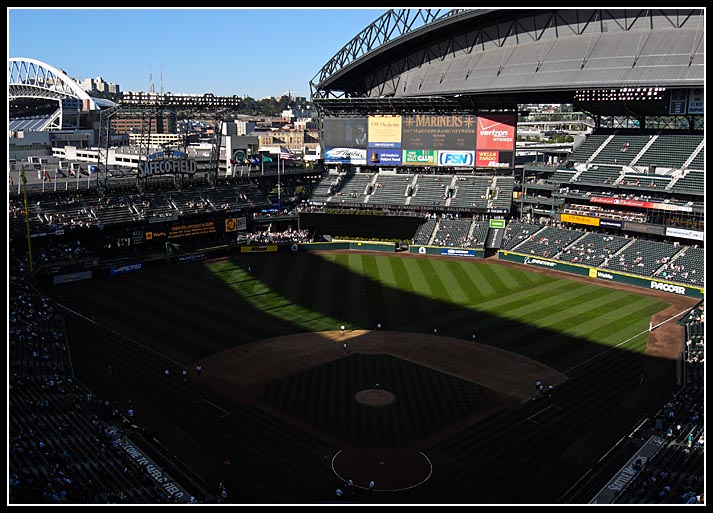
Just under your thumb is another control wheel of sorts, but it doesn't actually spin. In Manual mode this button gives direct access to shutter speeds by moving it either left or right. When in AV (Aperture Priority) mode you press it in and a customizable menu pops up giving you access to up to 5 controls (I use 3 to keep down the clutter) such as EV, white balance, ISO, and some other stuff I can't remember right now. You can choose how many items are in the menu and what order they appear...very nice for a P&S! Once you've selected on of the menu items (using the same switch under your thumb by flicking it left or right) the 4 way control rocker makes the adjustments. You can leave the menu item (like EV) displayed on the screen or hide it with another press of the control rocker. I've always felt comfortable with figuring out new electronics but I found this all very easy and intuitive. I still haven't opened the users manual and didn't know how the controls worked before I bought the camera. I think it took me all of 2 minutes fiddling with the camera and running through the menus before I had this all figured out. I'm sure when I actually go through the manual I'll find even more I wasn't aware of.
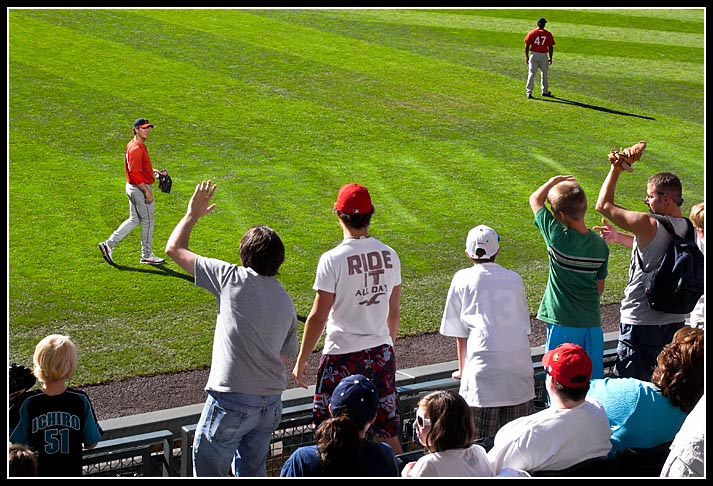
Another handy and customizable feature is a small
f button on the top left of the camera. Out of the box it's setup so that when you press the button it engages manual focus. I personally find manual focus to be next to worthless on a digital P&S camera unless I were in a controlled situation with good light and plenty of time to compose and focus. But if that was the case I'd be using my DSLR. Thankfully though you can set the button up to control a few different things. I set it up so that it locks exposure with the press of a button. Very handy when I don't want to focus on what gives me the proper exposure. All of this is made even easier with the live histogram, which I absolutely love. My biggest complaint with the F30 was that it didn't have any histogram at all (not even in playback). A live histogram is a godsend though.
People complain a lot about the handling of digital cameras as compared to film cameras but I've got to say that many of them are
easier to control manually then most film cameras. I'd take the easy to use control wheels that fall under your fingers any day over the shutter control wheel on top of the camera and aperture control on the lens. How many film cameras will let you adjust shutter/aperture easily and quickly while holding the camera with one hand? I have 3 digital cameras and I can easily do that will all of them. Of course that's not the case with your typical digital P&S shoot, but they didn't let you do that with film P&S cameras either.

Anyway, enough about the handling and layout of the camera; all that doesn't mean anything if it can't take pictures. When it comes to actually taking pictures I'm still on the fence about the camera. As other reviewers and users have mentioned auto focus in macro mode really sucks. Every time you focus the lens seems to focus all the way in and out before finally settling on the correct focus. Even if you focus the camera with a half press of the shutter, release the shutter and then do another half press without moving the camera it goes through the whole process again, which takes a couple seconds. But hey, I didn't buy it for it's macro performance so I can live with that I guess.

I've gotten some very good results from it but I've also had some shots come out blurry where the shutter speed should have been high enough to keep camera movement from being an issue. The color hasn't always seemed that great in the pictures, white balance doesn't seem to be the most accurate, and the shots just don't look that impressive out of the camera for the most part. I started out shooting in JPG mode but since I've mostly been hiking with it so far I haven't really needed the shot to shot speed so I've been putting up with the 5 second RAW write times; which is nice as it allows more flexibility in post processing.
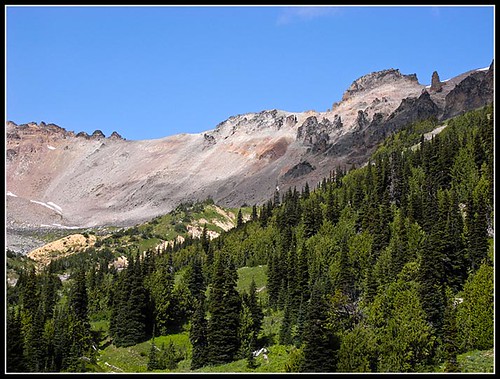
Shots in good, bright light look plenty pleasing, it's the shots in poorer light that just don't look right (and not just because of the poor light). The just don't look very sharp, even when shot at fairly high shutter speeds and viewed as small images on-screen. Perhaps the image stabilization isn't all I'd hoped it would be on this model and it's letting me down a little. I'll have to do some comparison shots on a tripod.
I definitely need to spend some more time with the camera to get to know it a little more and figure out how the get the best out of it. I'm not sold on the image quality yet but I need to do a little tinkering to see if it's me or the camera that's at fault. One thing I've noticed is that the shutter button is a little harder to depress then I'd like and it makes me prone to rotating the camera slightly when I do press the shutter, which could be resulting in some of the problems. I currently have the camera switched to “spot focus” so I can choose where it focuses but it still hasn't seemed 100% accurate and even though it lights up green to show it's successfully focused there have been times I could see on the screen it wasn't even close to in focus.
Time will tell how I really get along with the camera; it might turn out to be great yet but I am a little nervous about it. I've always been comfortable with electronics and new gadgets and I've never had a camera yet where I couldn't get consistently good results almost right out of the box. I'm no where near ready to say the camera is a dud yet but the jury is still out. I'll update more after I spend some more time with it and get to know it a little better.

I've started a Flickr set with some GX100 shots in it, you can
see them here. Take a look for yourself and see what you think of the sharpness. Even in these small web images I think it's plain to see some just aren't very sharp. I realize that some are due to too slow of shutter speeds but many are in good light with high shutter speeds. I've got more, some better and some worse, but I just don't have time right now to edit and post all of them. I'll add more as time allows though. Tell me what you think.
 I went to sleep and when I powered up the camera in the morning this was the image that was waiting for me. It turned out way better then I thought it would and the moon actually did a perfect job of lightning the foreground without blowing any highlights. It wasn't the look I was going for when I set up the shot but I'll take it anyway!
I went to sleep and when I powered up the camera in the morning this was the image that was waiting for me. It turned out way better then I thought it would and the moon actually did a perfect job of lightning the foreground without blowing any highlights. It wasn't the look I was going for when I set up the shot but I'll take it anyway!